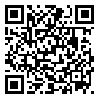Volume 24, Issue 7 (10-2025)
JRUMS 2025, 24(7): 667-672 |
Back to browse issues page
Ethics code: ندارد
Download citation:
BibTeX | RIS | EndNote | Medlars | ProCite | Reference Manager | RefWorks
Send citation to:



BibTeX | RIS | EndNote | Medlars | ProCite | Reference Manager | RefWorks
Send citation to:
Masoudi F. From The Lancet to Rafsanjan, a Perspective on the Role of Scientific Journal Editors:
A Letter to the Editor. JRUMS 2025; 24 (7) :667-672
URL: http://journal.rums.ac.ir/article-1-7761-en.html
URL: http://journal.rums.ac.ir/article-1-7761-en.html
Keywords: Scientific editor, Scientific publishing management, Publishing ethics, Medical journals, Scientific transparency
Full-Text [PDF 228 kb]
(41 Downloads)
| Abstract (HTML) (49 Views)
Full-Text: (27 Views)
From The Lancet to Rafsanjan, a Perspective on the Role of Scientific Journal Editors:
A Letter to the Editor
F. Masoudi [1]
Received: 09/06/25 Sent for Revision: 08/08/25 Received Revised Manuscript: 30/07/25 Accepted: 02/08/25
The role of scientific journal editors extends beyond manuscript selection to encompass leadership in scientific, managerial, ethical, and social aspects of scholarly publishing. Reviewing the experiences of prominent international editors such as Richard Horton and Richard Smith, alongside successful domestic editors like Dr. Mohsen Rezaeian, demonstrates that responsible and multifaceted editorial management significantly impacts the quality and credibility of scientific journals. This article analyzes the editorial approach of Dr. Rezaeian in Rafsanjan Medical Sciences Journal, highlighting his consistent editorial notes, focus on local issues, transparency, and ethical and educational commitment. The study underscores the importance of enhancing the status of scientific editors in Iran and adopting successful global editorial models.
Keywords: Scientific editor, Scientific publishing management, Publishing ethics, Medical journals, Scientific transparency
Citation: Masoudi F. From The Lancet to Rafsanjan, a Perspective on the Role of Scientific Journal Editors: A Letter to the Editor. J Rafsanjan Univ Med Sci 2025; 24 (7): 667-72. [Farsi]
(Corresponding Author) Tel: (025) 36122248, E-mail: f.masodi@muq.ac.ir
A Letter to the Editor
F. Masoudi [1]
Received: 09/06/25 Sent for Revision: 08/08/25 Received Revised Manuscript: 30/07/25 Accepted: 02/08/25
The role of scientific journal editors extends beyond manuscript selection to encompass leadership in scientific, managerial, ethical, and social aspects of scholarly publishing. Reviewing the experiences of prominent international editors such as Richard Horton and Richard Smith, alongside successful domestic editors like Dr. Mohsen Rezaeian, demonstrates that responsible and multifaceted editorial management significantly impacts the quality and credibility of scientific journals. This article analyzes the editorial approach of Dr. Rezaeian in Rafsanjan Medical Sciences Journal, highlighting his consistent editorial notes, focus on local issues, transparency, and ethical and educational commitment. The study underscores the importance of enhancing the status of scientific editors in Iran and adopting successful global editorial models.
Keywords: Scientific editor, Scientific publishing management, Publishing ethics, Medical journals, Scientific transparency
Citation: Masoudi F. From The Lancet to Rafsanjan, a Perspective on the Role of Scientific Journal Editors: A Letter to the Editor. J Rafsanjan Univ Med Sci 2025; 24 (7): 667-72. [Farsi]
[1]- MSc, Medical Library and Information Science, Clinical Research Development Center, Shahid Beheshti Hospital, Qom University of Medical Sciences, Qom, Iran, ORCID: 0000-0002-5167-3825
(Corresponding Author) Tel: (025) 36122248, E-mail: f.masodi@muq.ac.ir
Type of Study: Research |
Subject:
Editorial
Received: 2025/06/7 | Accepted: 2025/08/2 | Published: 2025/10/18
Received: 2025/06/7 | Accepted: 2025/08/2 | Published: 2025/10/18
References
1. Horton R. Global science and social movements: towards a rational politics of global health. International Health 2009; 1(1): 26-30.
2. Smith R. Can medical journals lead or must they follow? Medical Journal of Australia 2005; 183(11-12): 665-8.
3. Smith R. The trouble with medical journals. CRC press; 2024 Nov 1.
4. Plakhotnik MS. How do editors use editorials to lead their journals? Insights from the field of human resource management. Learned Publishing 2024; 37(2): 89-97.
5. Godlee F. Conflicts of interest and pandemic flu. BMJ 2010; 340.
6. Atwoli L, Baqui AH, Benfield T, Bosurgi R, Godlee F, Hancocks S, et al. Call for emergency action to limit global temperature increases, restore biodiversity, and protect health: Wealthy nations must do much more, much faster. Neurology 2021; 97(14): 658-60.
7. Lavizzo-Mourey RJ, Besser RE, Williams DR. Understanding and mitigating health inequities—past, current, and future directions. New England Journal of Medicine 2021; 384(18): 1681-4.
8. Jefferson T, Wager E, Davidoff F. Measuring the quality of editorial peer review. JAMA 2002; 287(21): 2786-90.
9. Serghiou S, Contopoulos-Ioannidis DG, Boyack KW, Riedel N, Wallach JD, Ioannidis JP. Assessment of transparency indicators across the biomedical literature: How open is open? PLoS Biology 2021; 19(3): e3001107.
10. Plakhotnik MS. How do editors use editorials to lead their journals? Insights from the field of human resource management. Learned Publishing 2024; 37(2): 89-97.
11. Haustein S. Scholarly Twitter metrics. In: Glänzel W, Moed HF, Schmoch U, Thelwall M, editors. Springer Handbook of Science and Technology Indicators. Cham: Springer; 2019; p. 729-60.
12. Looi JC. Impact, integrity and editorial independence. Aust N Z J Psychiatry 2022; 56(12): 1457–8.
13. Wilhite A, Fong EA, Wilhite S. The influence of editorial decisions and the academic network on self-citations and journal impact factors. Research Policy 2019; 48(6): 1513-22.
14. Jaykaran, Yadav P, Chavda N, Kantharia ND. Survey of 'instructions to authors' of Indian medical journals for reporting of ethics and authorship criteria. Indian J Med Ethics 2011; 8(1): 35-8.
15. De Marchi M, Rocchi M. The editorial policies of scientific journals: Testing an impact factor model. Scientometrics 2001; 51(2): 395-404.
16. Gray R, Bressington D, Jones M, Thompson DR. What performance metrics should Journal Editors report? Or, is Impact Factor the only metric in town. Journal of Advanced Nursing 2021; 77(1): 1-3.
17. Jawaid SA. Problems faced by editors of peer reviewed medical journals. Saudi Medical Journal 2004; 25(1 Suppl): S21-5.
18.
Send email to the article author
| Rights and permissions | |
 |
This work is licensed under a Creative Commons Attribution-NonCommercial 4.0 International License. |







